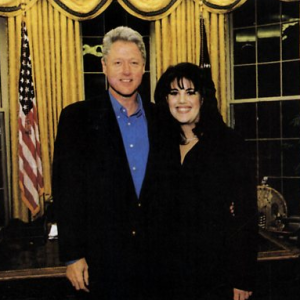On June 2, Petaluma (California) High School student Lulabel Seitz had her mic cut off during her valedictorian speech for raising issues with how the school handles sexual assault allegations, including her own reported incident.
Her classmates chanted “let her speak!” but school officials would not abide. They said they wanted to make sure their graduation ceremony was “appropriate and beautiful.”
Four days later, Stephen Colbert tweeted that he’d be giving former president Bill Clinton a “do-over” interview to address the backlash the former president got for saying he did the right thing by remaining in office after the Monica Lewinsky scandal — and insisting he didn’t owe Lewinsky an apology.
Why is it that Clinton, who’s had his chance at the mic for decades, gets second chance after second chance, while someone like Seitz isn’t even allowed to finish her sentence?
As allegations against celebrities make national headlines in the wake of the #MeToo movement, people seem to keep harping on each alleged perpetrator’s every word. But after speaking out, many of the victims are pushed away from the limelight.
It’s in this silence where perpetrators are protected and rape culture thrives.
The Lewinsky scandal is a prime example. In its aftermath, what Clinton wanted was for Lewinsky to “vanish entirely,” Helaine Olane wrote recently in the Washington Post. At Lewis and Clark College, Lewinsky’s alma mater, speakers were forbidden from even mentioning her name. Sound familiar?
Why are we so afraid of listening to what survivors of sexual misconduct have to say? Is it because then we might really have to reckon with difficult cultural changes?
Cultural change takes time. It doesn’t offer shallow solutions that will appease donors to campaigns or large universities. The trials and errors of that cultural shift will have to happen under the scrutiny of potential benefactors and consumers of every industry over several years.
That’s why we try to sweep the victims under the rug.
We debate how many second chances and do-overs it’ll take Clinton to heal any ill will toward him in the #MeToo era, when we should be listening to what Lewinsky has to say about what healing looks like.
“My hope, given the two decades that have passed,” Lewinsky penned in a recent piece for Vanity Fair, “is that we are now at a stage where we can untangle the complexities and context (maybe even with a little compassion), which might help lead to an eventual healing — and a systemic transformation.”
One step she identifies on the way to that transformation is taking victims like herself out of isolation. For one, that means bringing to light the systemic nature of sexual abuse, not treating each case as an individual matter.
Take the tens of thousands of complaints revealing the rampant sexual abuse that takes place far in immigration detention. Despite fear of retaliation and deportation, “women and men held in immigration detention centers across the country have been trying to say ‘me too’ for years,” Alice Speri wrote for The Intercept.
Some of those victims literally fought for their lives to have their voices heard. And yet, the media are flush with articles on Bill Clinton versus himself.
In Vanity Fair, Lewinsky acknowledges that the conversation to be had is complicated and nuance is important. But to treat the voice of perpetrator and survivor equally in the court of public opinion is a disservice to all of those brave women and men who are taking this moment to advocate for not only a systemic analysis, but systemic solutions.
If we listened to them, what we’d hear is a call for resources. Not only for the costly legal services required to make speaking out worth it, but also for mental health services, and for prevention programs in schools.
We’d hear a call for policy changes in workplaces, not just firings.
The solutions are there, we just have to learn how to pass the mic.

